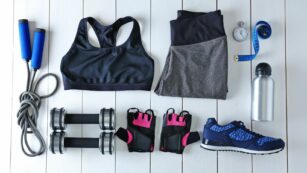Understanding the menstrual cycle can unlock a new level of fitness and well-being for women. Many don’t realize that syncing workouts with their cycle can optimize performance and recovery. By tailoring exercise routines to the hormonal fluctuations throughout the month, women can achieve better results and feel more in tune with their bodies. From the high-energy follicular phase to the more introspective luteal phase, each stage of the menstrual cycle offers unique opportunities for different types of workouts. Embracing this approach not only enhances physical performance but also fosters a more compassionate and effective fitness journey. Dive into how a menstrual cycle workout plan can transform your fitness routine and overall health. Activities such as cycling, swimming, and bodyweight exercises keep fitness levels up without overexertion. Incorporating restorative practices aids in managing potential fatigue. Understanding the menstrual cycle’s impact on fitness is only part of the equation.
Menstrual Cycle Workout Plan
 Syncing workout routines with menstrual cycle phases can significantly improve performance and recovery. Each phase impacts energy levels and hormonal balance differently, allowing women to optimize their exercise patterns. The follicular phase spans from the first day of menstruation to ovulation. During this phase, estrogen gradually increases, boosting energy and strength. Utilizing a menstrual cycle workout plan, women can achieve a balanced fitness approach that aligns with their natural rhythms. Complementing workouts with phase-specific nutrition can further enhance results. During the follicular phase, incorporating protein-rich foods and complex carbohydrates can support high-intensity training. Ovulation calls for hydration and nutrient-dense meals to sustain peak performance. In the luteal phase, focus on magnesium-rich foods like leafy greens and nuts to combat fatigue and bloating. Finally, during menstruation, iron-rich foods such as lean meats and legumes can help replenish lost nutrients. By aligning both workouts and nutrition with the menstrual cycle, women can optimize their fitness journey, ensuring a balanced and effective approach to health and well-being.
Syncing workout routines with menstrual cycle phases can significantly improve performance and recovery. Each phase impacts energy levels and hormonal balance differently, allowing women to optimize their exercise patterns. The follicular phase spans from the first day of menstruation to ovulation. During this phase, estrogen gradually increases, boosting energy and strength. Utilizing a menstrual cycle workout plan, women can achieve a balanced fitness approach that aligns with their natural rhythms. Complementing workouts with phase-specific nutrition can further enhance results. During the follicular phase, incorporating protein-rich foods and complex carbohydrates can support high-intensity training. Ovulation calls for hydration and nutrient-dense meals to sustain peak performance. In the luteal phase, focus on magnesium-rich foods like leafy greens and nuts to combat fatigue and bloating. Finally, during menstruation, iron-rich foods such as lean meats and legumes can help replenish lost nutrients. By aligning both workouts and nutrition with the menstrual cycle, women can optimize their fitness journey, ensuring a balanced and effective approach to health and well-being.
Benefits Of A Menstrual Cycle Workout Plan
Menstrual cycle workout plans offer significant advantages for women’s fitness and well-being. By tailoring exercises to each phase of the menstrual cycle, women can see improved outcomes across various aspects of their health. Period-specific training can lead to enhanced athletic performance. For instance, during the follicular phase (Day 1-14), higher estrogen levels stimulate energy, making this period ideal for high-intensity interval training (HIIT), strength training, and cardio. Peak performance can often be observed during this time. Aligning workouts with the menstrual cycle supports better recovery. In the luteal phase (Day 17-28), when progesterone increases and fatigue sets in, focusing on moderate cardio, light strength training, and yoga aids muscle recovery and reduces soreness. Hormonal fluctuations impact energy and mood. A menstrual cycle workout plan takes these variations into account, helping stabilize hormonal levels. During the menstrual phase (Day 1-5), light activities such as gentle stretching and walking can alleviate hormonal imbalances and provide a soothing effect.
the menstrual cycle, women can see improved outcomes across various aspects of their health. Period-specific training can lead to enhanced athletic performance. For instance, during the follicular phase (Day 1-14), higher estrogen levels stimulate energy, making this period ideal for high-intensity interval training (HIIT), strength training, and cardio. Peak performance can often be observed during this time. Aligning workouts with the menstrual cycle supports better recovery. In the luteal phase (Day 17-28), when progesterone increases and fatigue sets in, focusing on moderate cardio, light strength training, and yoga aids muscle recovery and reduces soreness. Hormonal fluctuations impact energy and mood. A menstrual cycle workout plan takes these variations into account, helping stabilize hormonal levels. During the menstrual phase (Day 1-5), light activities such as gentle stretching and walking can alleviate hormonal imbalances and provide a soothing effect.
Phase-Based Workout Recommendations
 Connecting workouts to the menstrual cycle enables women to optimize performance and recovery. Explore phase-specific plans to maximize benefits. Light exercises help improve mood and alleviate cramps during menstruation. Gentle stretching and walking are effective options. Yoga poses targeting the lower abdomen, like Child’s Pose and Cat-Cow, can also provide relief. Focus on hydration and maintaining a balanced diet for better energy levels. High estrogen during the follicular phase boosts energy and strength. This period, covering Days 1-14, suits high-intensity interval training (HIIT), strength training, and cardio. Increasing workout intensity gradually is beneficial. Examples of effective exercises include sprint intervals, weight lifting, and circuit training. Peak estrogen levels in the ovulation phase enhance muscle performance and coordination. Lasting from Day 14 to 16, this phase is ideal for maximum strength and performance activities. Engaging in sprints, team sports, or heavy lifting can yield excellent results. Scheduling challenging workouts during this window leverages physiological advantages. Rising progesterone in the luteal phase can reduce energy, suggesting a shift to moderate exercise. Spanning Days 17-28, workouts should focus on moderate cardio, light strength training, and yoga.
Connecting workouts to the menstrual cycle enables women to optimize performance and recovery. Explore phase-specific plans to maximize benefits. Light exercises help improve mood and alleviate cramps during menstruation. Gentle stretching and walking are effective options. Yoga poses targeting the lower abdomen, like Child’s Pose and Cat-Cow, can also provide relief. Focus on hydration and maintaining a balanced diet for better energy levels. High estrogen during the follicular phase boosts energy and strength. This period, covering Days 1-14, suits high-intensity interval training (HIIT), strength training, and cardio. Increasing workout intensity gradually is beneficial. Examples of effective exercises include sprint intervals, weight lifting, and circuit training. Peak estrogen levels in the ovulation phase enhance muscle performance and coordination. Lasting from Day 14 to 16, this phase is ideal for maximum strength and performance activities. Engaging in sprints, team sports, or heavy lifting can yield excellent results. Scheduling challenging workouts during this window leverages physiological advantages. Rising progesterone in the luteal phase can reduce energy, suggesting a shift to moderate exercise. Spanning Days 17-28, workouts should focus on moderate cardio, light strength training, and yoga.

